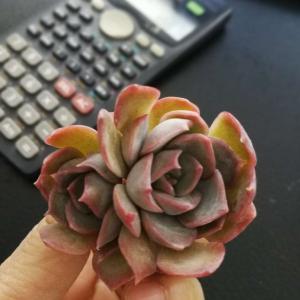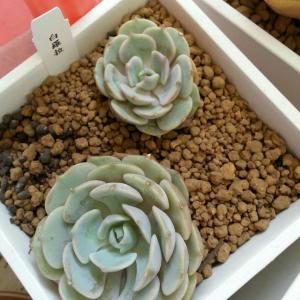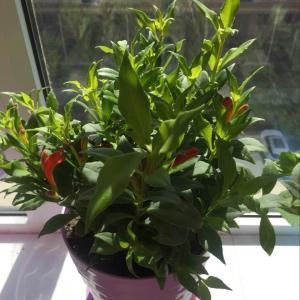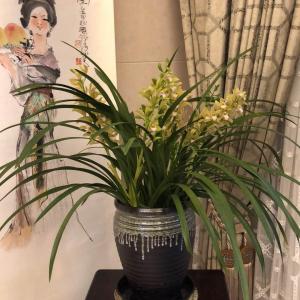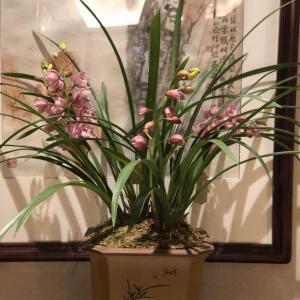心扉的猫咪
2018年03月06日

2018.3.6
1.蓝雪苗长势不错,欢了大盆
2.文竹移入了单间,爆出新芽
3.发财树之前都掉光了叶子,今日开始抽新枝
4.三色堇长出新花苞
5.瓜叶菊新买的,看看花而已
6.捡回家的紫罗兰,随便种种
7.不知是小丽花还是大丽花,也是刚捡到的
8.前年的红色重瓣长寿,花苞出了一个多月了,还没开
9.仙客来好像长了虫子,用了药试试看
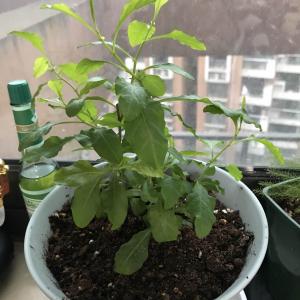
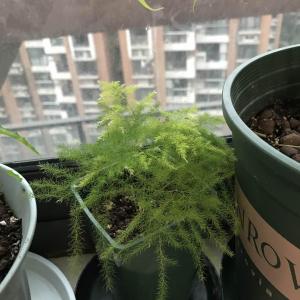
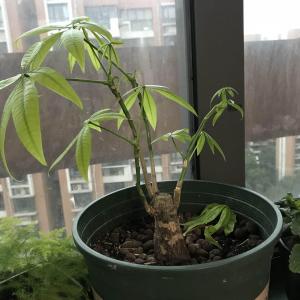
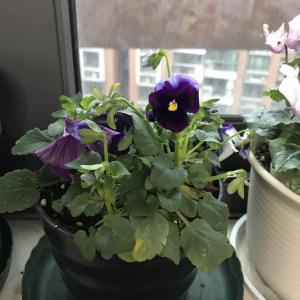
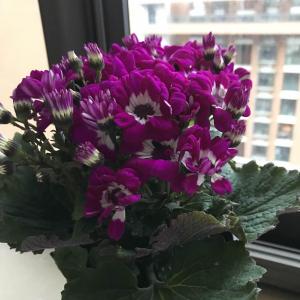
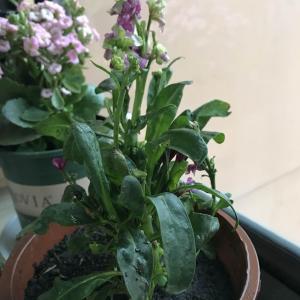
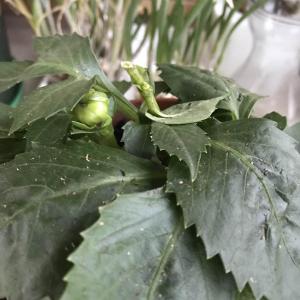
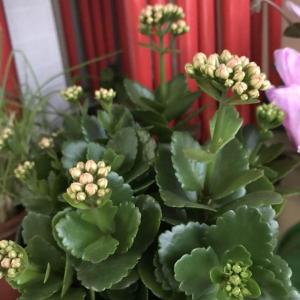

1.蓝雪苗长势不错,欢了大盆
2.文竹移入了单间,爆出新芽
3.发财树之前都掉光了叶子,今日开始抽新枝
4.三色堇长出新花苞
5.瓜叶菊新买的,看看花而已
6.捡回家的紫罗兰,随便种种
7.不知是小丽花还是大丽花,也是刚捡到的
8.前年的红色重瓣长寿,花苞出了一个多月了,还没开
9.仙客来好像长了虫子,用了药试试看









0
0
文章
Miss Chen
2018年02月28日

Description: This herbaceous perennial plant is 4-7' tall and little branched, except for a few stems developing from the middle to upper leaf axils. The central stem is light green, glabrous, 4-angled, and strongly winged. The opposite leaves are up to 6" long and 3" across, while their petioles are up to 2" long. The leaves are lanceolate-ovate or cordate-ovate, medium to dark green, and hairless or nearly so; their margins are coarsely serrated. At the apex of a plant, young vegetation may be slightly pubescent. The central stem and major secondary stems terminate in individual spikes of flowers. Each spike is about 4-16" long and ¾–1" across; the length of each spike is highly variable depending on the size of each plant and its maturity. The flowers are densely crowded together all around the spike, although only a few flowers are in bloom at the same time. Each flower consists of a tubular corolla about 1/3" (8 mm.) long and a tubular calyx about 1/4" (6 mm.) long. The pale yellow corolla has 2 upper lobes, 2 lateral lobes, and a single lower lobe that is the largest in size. These lobes are short and rounded. The light green calyx has 5 teeth and several veins along its sides; it is hairless or mostly hairless. Each flower has 4 stamens that are strongly exerted from the corolla and a divided style. The blooming period occurs from mid-summer to early fall and lasts 1-2 months. Individual flowers are short-lived. At maturity, each flower is replaced by 4 nutlets. The root system is fibrous and rhizomatous. Clonal colonies are often produced from the rhizomes.
Cultivation: The preference is light shade to partial sun, moist to mesic conditions, and a fertile loamy soil. This plant dislikes dry sunny areas, which will cause the foliage to wilt during a summer drought.
Range & Habitat: The native Yellow Giant Hyssop is occasional to locally common in most areas of Illinois, except in the NW and southern sections of the state, where it is uncommon or absent (see Distribution Map). Habitats include deciduous woodlands, woodland borders and openings, thickets, meadows in wooded areas, and powerline clearances in wooded areas. Occasional disturbance is beneficial if it reduces, but does not eliminate, the shade from canopy trees and other kinds of woody vegetation.
Faunal Associations: The flowers are visited by bees (e.g., honeybees, bumblebees, & Halictid bees), bee flies, and butterflies. These insects suck nectar, although some of the bees may collect pollen. Syrphid flies also visit the flowers to feed on pollen, but they are less effective at cross-pollination. The dense foliage of Yellow Giant Hyssop attracts its fair share of predatory insects, including parasitic wasps, spiders, ladybird beetles, and others. White-Tailed Deer leave the foliage alone because of its bitter taste.

Photographic Location: A powerline clearance at Busey Woods in Urbana, Illinois.
Comments: The pale yellow flowers are not very showy because they seem small in comparison to the rest of the plant and only a few flowers are in bloom at the same time. Thus, the attractiveness of Yellow Giant Hyssop consists primarily of its foliage. Other species in this genus that occur in Illinois are Agastache scrophulariaefolia (Blue Giant Hyssop) and Agastache foeniculum (Anise Hyssop). Blue Giant Hyssop is about the same size as Yellow Giant Hyssop and it has a similar appearance, except that the corolla of its flowers are blue and its stems are pubescent. Anise Hyssop has a shorter stature than the preceding species and its foliage has an anise scent; it also has flowers with blue corollas.
Cultivation: The preference is light shade to partial sun, moist to mesic conditions, and a fertile loamy soil. This plant dislikes dry sunny areas, which will cause the foliage to wilt during a summer drought.
Range & Habitat: The native Yellow Giant Hyssop is occasional to locally common in most areas of Illinois, except in the NW and southern sections of the state, where it is uncommon or absent (see Distribution Map). Habitats include deciduous woodlands, woodland borders and openings, thickets, meadows in wooded areas, and powerline clearances in wooded areas. Occasional disturbance is beneficial if it reduces, but does not eliminate, the shade from canopy trees and other kinds of woody vegetation.
Faunal Associations: The flowers are visited by bees (e.g., honeybees, bumblebees, & Halictid bees), bee flies, and butterflies. These insects suck nectar, although some of the bees may collect pollen. Syrphid flies also visit the flowers to feed on pollen, but they are less effective at cross-pollination. The dense foliage of Yellow Giant Hyssop attracts its fair share of predatory insects, including parasitic wasps, spiders, ladybird beetles, and others. White-Tailed Deer leave the foliage alone because of its bitter taste.

Photographic Location: A powerline clearance at Busey Woods in Urbana, Illinois.
Comments: The pale yellow flowers are not very showy because they seem small in comparison to the rest of the plant and only a few flowers are in bloom at the same time. Thus, the attractiveness of Yellow Giant Hyssop consists primarily of its foliage. Other species in this genus that occur in Illinois are Agastache scrophulariaefolia (Blue Giant Hyssop) and Agastache foeniculum (Anise Hyssop). Blue Giant Hyssop is about the same size as Yellow Giant Hyssop and it has a similar appearance, except that the corolla of its flowers are blue and its stems are pubescent. Anise Hyssop has a shorter stature than the preceding species and its foliage has an anise scent; it also has flowers with blue corollas.
0
0
文章
Miss Chen
2018年02月27日

Description: This perennial plant is up to 5' tall and unbranched, except near the inflorescence. The central stem is round and smooth. Scattered along this stem are 3-7 whorled leaves. These leaves are up to 6" long and 1½" across with serrated margins. They are ovate to narrowly ovate, and are either sessile or have short petioles. At the apex of the plant are several slender spikes of white flowers up to 8" long, resembling a candelabra. The narrow tubular flowers are about ¼" long, from which 2 yellow or brown stamens are exerted. These flowers are crowded together all around each spike, blooming from the bottom up. They have no scent.
The blooming period usually occurs from early to mid-summer, and lasts about a month. The tiny seeds can be carried several feet away from the mother plant by the wind. The root system consists of a central taproot and some rhizomes, which enable vegetative reproduction.
Cultivation: The preference is full or partial sun, and moist to average conditions. Growth is best in rich loamy soil, although some sand or clay is tolerated. The leaves may turn yellowish green in bright sunlight or during a drought, otherwise they normally appear healthy and are not often bothered by disease. This plant has a tendency to flop over on slopes.

Range & Habitat: The native Culver's Root occurs throughout Illinois, except a few south-central counties (see Distribution Map). Although widely distributed, it is only occasionally seen. Culver's root occurs in moist to mesic black soil prairies, sand prairies, openings and edges of woodlands, thickets, savannas, and swampy meadows along rivers and ditches. This plant is not often seen in highly disturbed habitats.
Faunal Associations: The most common visitors to the flowers are long-tongued and short-tongued bees, which collect pollen or suck nectar. This includes honeybees, bumblebees, Mason bees, Green Metallic bees, Masked bees, and others. Other kinds of insect visitors include Sphecid wasps, butterflies, moths, and Syrphid flies. The latter include species that feed on pollen only and are non-pollinating. Culver's Root doesn't appear to be bothered by leaf-chewing insects or mammalian herbivores to the same extent as other plants. The seeds are too tiny to be of much interest to birds.

Photographic Location: The photographs were taken at Meadowbrook Park in Urbana, Illinois.
Comments: While in bloom, this plant has an elegant appearance, although the pretty white flowers rapidly turn brown. Its common name refers to the medicinal usage of the bitter root, which has purgative properties. The surname 'Culver' probably refers to a pioneer physician who advocated the use of this plant for the treatment of various ailments.
The blooming period usually occurs from early to mid-summer, and lasts about a month. The tiny seeds can be carried several feet away from the mother plant by the wind. The root system consists of a central taproot and some rhizomes, which enable vegetative reproduction.
Cultivation: The preference is full or partial sun, and moist to average conditions. Growth is best in rich loamy soil, although some sand or clay is tolerated. The leaves may turn yellowish green in bright sunlight or during a drought, otherwise they normally appear healthy and are not often bothered by disease. This plant has a tendency to flop over on slopes.

Range & Habitat: The native Culver's Root occurs throughout Illinois, except a few south-central counties (see Distribution Map). Although widely distributed, it is only occasionally seen. Culver's root occurs in moist to mesic black soil prairies, sand prairies, openings and edges of woodlands, thickets, savannas, and swampy meadows along rivers and ditches. This plant is not often seen in highly disturbed habitats.
Faunal Associations: The most common visitors to the flowers are long-tongued and short-tongued bees, which collect pollen or suck nectar. This includes honeybees, bumblebees, Mason bees, Green Metallic bees, Masked bees, and others. Other kinds of insect visitors include Sphecid wasps, butterflies, moths, and Syrphid flies. The latter include species that feed on pollen only and are non-pollinating. Culver's Root doesn't appear to be bothered by leaf-chewing insects or mammalian herbivores to the same extent as other plants. The seeds are too tiny to be of much interest to birds.

Photographic Location: The photographs were taken at Meadowbrook Park in Urbana, Illinois.
Comments: While in bloom, this plant has an elegant appearance, although the pretty white flowers rapidly turn brown. Its common name refers to the medicinal usage of the bitter root, which has purgative properties. The surname 'Culver' probably refers to a pioneer physician who advocated the use of this plant for the treatment of various ailments.
0
0
文章
Miss Chen
2018年02月27日

Description: This perennial plant is 3-6' tall and unbranched, except for the flowering stalks of the inflorescence. The central stem is stout and covered with fine white hairs. The alternate dark green leaves are up to 7" long and 2" across. They are lanceolate to narrowly ovate, and slightly serrrated along the margins. The lower sides of the leaves are covered in dense white hairs, which are longer and more prominent than other Vernonia spp. At the apex of the plant, the inflorescence is a corymb of numerous rayless composite flowers. The hairy stems of the inflorescence are usually reddish brown. Each composite flower is about ½–¾" across, and contains from 30-60 disk florets (usually closer to the lower end of the range). These florets are bright magenta and quite showy. There is no floral scent. Numerous dull green or reddish brown bracts subtend the composite flowers, which are aligned together like fish scales. The blooming period occurs from late summer to early fall, and lasts about a month. The root system is densely fibrous and rhizomatous, and will form offsets to create a small colony of plants. The ribbed, slightly hairy achenes have a small tufts of light brown hair, and are dispersed by the wind.
Cultivation: This plant prefers full or partial sunlight and moist to average conditions. It is somewhat drought resistant. Under severe conditions, the plant will wilt and blooms abort. The soil texture can consist of fertile loam, clay-loam, or have a slightly gritty texture from exposed glacial till and gravel. Disease is not troublesome, except for occasional episodes of mildew during the fall. This species is easy to grow.
Range & Habitat: The native Missouri Ironweed occurs throughout Illinois, except in the NW corner of the state (see Distribution Map). It is a common plant. Typical habitats include moist to mesic black soil prairies, openings and edges of woodlands, swamps, seeps, limestone glades, edges of lakes, overgrazed pastures, vacant lots, and areas along railroads. It is common in disturbed areas, but also occurs in high quality habitats.

Faunal Associations: The flowers attract long-tongued bees, butterflies, and skippers primarily. Among the bees, are such visitors as bumblebees, Epeoline Cuckoo bees, and Miner bees. Butterfly visitors include Swallowtails, Whites, Sulfurs, Monarchs, Painted Ladies, and others. Bee flies and Halictid bees may also visit the flowers. The flowers are capable of self-pollination in the absence of these insects. The caterpillars of some moths feed on Ironweed species, including Grammia parthenice (Parthenice Tiger Moth), Perigea xanthioides (Red Groundling), and Papaipema cerussata (Ironweed Borer Moth). Mammalian herbivores avoid consumption of this plant because of the bitter taste of the leaves. In overgrazed pastures, Ironweed is an 'increaser' because it is one of the last plants to be eaten.

Photographic Location: Photographs were taken at the Red Bison Railroad Prairie in Savoy, Illinois.
Comments: This is an attractive plant when in bloom, and one of the best attractors of late summer butterflies. Missouri Ironweed can be distinguished from other Vernonia spp. primarily by the number of disk florets in the compound flowers, and the profuse hairiness of the stems and lower sides of the leaves. It is probably the most common species of ironweed in Illinois. Sometimes hybrids occur among different species of ironweeds, making identification difficult.
Cultivation: This plant prefers full or partial sunlight and moist to average conditions. It is somewhat drought resistant. Under severe conditions, the plant will wilt and blooms abort. The soil texture can consist of fertile loam, clay-loam, or have a slightly gritty texture from exposed glacial till and gravel. Disease is not troublesome, except for occasional episodes of mildew during the fall. This species is easy to grow.
Range & Habitat: The native Missouri Ironweed occurs throughout Illinois, except in the NW corner of the state (see Distribution Map). It is a common plant. Typical habitats include moist to mesic black soil prairies, openings and edges of woodlands, swamps, seeps, limestone glades, edges of lakes, overgrazed pastures, vacant lots, and areas along railroads. It is common in disturbed areas, but also occurs in high quality habitats.

Faunal Associations: The flowers attract long-tongued bees, butterflies, and skippers primarily. Among the bees, are such visitors as bumblebees, Epeoline Cuckoo bees, and Miner bees. Butterfly visitors include Swallowtails, Whites, Sulfurs, Monarchs, Painted Ladies, and others. Bee flies and Halictid bees may also visit the flowers. The flowers are capable of self-pollination in the absence of these insects. The caterpillars of some moths feed on Ironweed species, including Grammia parthenice (Parthenice Tiger Moth), Perigea xanthioides (Red Groundling), and Papaipema cerussata (Ironweed Borer Moth). Mammalian herbivores avoid consumption of this plant because of the bitter taste of the leaves. In overgrazed pastures, Ironweed is an 'increaser' because it is one of the last plants to be eaten.

Photographic Location: Photographs were taken at the Red Bison Railroad Prairie in Savoy, Illinois.
Comments: This is an attractive plant when in bloom, and one of the best attractors of late summer butterflies. Missouri Ironweed can be distinguished from other Vernonia spp. primarily by the number of disk florets in the compound flowers, and the profuse hairiness of the stems and lower sides of the leaves. It is probably the most common species of ironweed in Illinois. Sometimes hybrids occur among different species of ironweeds, making identification difficult.
0
0
文章
Miss Chen
2018年02月25日

Description: This biennial plant consists of a low-growing rosette of basal leaves up to 7" across during the 1st year. These basal leaves are up to 3½" long and ¾" across; they are green to greyish green, oblanceolate, dentate, and often slightly pinnatifid with shallow lobes. Their upper surface is often hairy, although they tend to become less hairy with age. During the 2nd year, Tower Mustard bolts during the spring and produces one or more flowering stalks up to 3½' tall. These stalks are light green to dull white, unbranched, hairless, and glaucous. Sometimes there may be a few hairs near the base of the stalks. The alternate cauline leaves are up to 3" long and 1" across. They are greyish green, lanceolate, smooth along the margins, hairless, and glaucous. Some of the lower cauline leaves may be dentate and slightly pinnatifid. The base of each cauline leaf clasps the stalk with a pair of basal lobes, which may be rounded or pointed. During cool spring weather, the cauline leaves may turn purple when they are exposed to full sun. Each stalk terminates in an elongated raceme of flowers and upright siliques (slender cylindrical seedpods). This raceme can become as long as the rest of the plant (up to 1¾' in length) and it has a tower-like appearance. Each flower at the apex of the raceme is up to 1/6" (4 mm.) across, consisting of 4 white or cream petals, 4 light green or yellow sepals, a stout style, and several stamens. The pedicels of the flowers and siliques are about ¼–½" in length.
The blooming period occurs during late spring to mid-summer and lasts about 1½ months. Each flower is replaced by a slender cylindrical silique up to 2½" long. The siliques are held upright close to stalk of the raceme. Each silique contains 1 or 2 rows of slightly flattened ovoid seeds. These small seeds have narrowly winged margins and they are dispersed to some extent by the wind. The root system consists of a stout taproot. This plant spreads by reseeding itself.
Cultivation: The preference is full sun to light shade, mesic to dry conditions, and loam, clay-loam, or rocky soil. This plant also tolerates soil containing sand or hardpan clay. It is fairly easy to grow from seed.
Range & Habitat: The native Tower Mustard occurs occasionally in the northern half of Illinois, but it is uncommon in the southern half of the state (see Distribution Map). Habitats include various kinds of prairies (sand, gravel, black soil, or clay), rocky open woodlands, barren savannas, limestone glades, rocky bluffs, and abandoned fields. In Illinois, Tower Mustard has low fidelity to any particular habitat. It also occurs in Eurasia.

Faunal Associations: Mostly small bees and flower flies visit the flowers for nectar or pollen. Occasionally various species of White butterflies (Pieridae) visit the flowers for nectar. The caterpillars of two Pierid butterflies, Anthocharis midea (Falcate Orangetip) and Euchloe olympia (Olympia Marble), prefer Arabis spp. (Rock Cresses) as a food source, particularly those Rock Cresses that are typically found in sunny habitats. The caterpillars of another Pierid butterfly, Pieris napi (Mustard White), reportedly feed on Rock Cresses, although this butterfly species hasn't been observed in Illinois since the 19th century. Little information appears to be available about the desirability of Tower Mustard as a food source for mammalian herbivores. However, the foliage is not particularly bitter nor peppery.
Photographic Location: The webmaster's wildflower garden in Urbana, Illinois.

Comments: Among the various Rock Cresses (Arabis spp. and related genera), Tower Mustard is mostly likely to be found in black soil prairies, although it also occurs in other kinds of habitats. The tower-like inflorescence gives this plant an odd appearance that is rather striking, especially when it becomes 3-4' tall. Because Tower Mustard is not difficult to grow and seems rather robust, it is rather surprising that this species is not more common. There are several Rock Cresses in Illinois, which can be found in either sunny or shady habitats, depending on the species. Some species have erect siliques that are appressed against the stalk of the raceme, while other species have siliques that are spreading or drooping. Tower Mustard belongs to the first group. Its appearance is similar to a very rare species, Arabis drummondii (Drummond's Rock Cress). This latter species has flattened siliques containing 2 rows of seeds and the style of its flowers is more slender than the style of Tower Mustard. Another species, Arabis hirsuta (Hairy Rock Cress), has hairs along at least the lower half of its flowering stalks, and it has flattened siliques containing a single row of seeds. The siliques of Tower Mustard are terete (round in cross-section). A scientific synonym of this plant is Arabis glabra.
The blooming period occurs during late spring to mid-summer and lasts about 1½ months. Each flower is replaced by a slender cylindrical silique up to 2½" long. The siliques are held upright close to stalk of the raceme. Each silique contains 1 or 2 rows of slightly flattened ovoid seeds. These small seeds have narrowly winged margins and they are dispersed to some extent by the wind. The root system consists of a stout taproot. This plant spreads by reseeding itself.
Cultivation: The preference is full sun to light shade, mesic to dry conditions, and loam, clay-loam, or rocky soil. This plant also tolerates soil containing sand or hardpan clay. It is fairly easy to grow from seed.
Range & Habitat: The native Tower Mustard occurs occasionally in the northern half of Illinois, but it is uncommon in the southern half of the state (see Distribution Map). Habitats include various kinds of prairies (sand, gravel, black soil, or clay), rocky open woodlands, barren savannas, limestone glades, rocky bluffs, and abandoned fields. In Illinois, Tower Mustard has low fidelity to any particular habitat. It also occurs in Eurasia.

Faunal Associations: Mostly small bees and flower flies visit the flowers for nectar or pollen. Occasionally various species of White butterflies (Pieridae) visit the flowers for nectar. The caterpillars of two Pierid butterflies, Anthocharis midea (Falcate Orangetip) and Euchloe olympia (Olympia Marble), prefer Arabis spp. (Rock Cresses) as a food source, particularly those Rock Cresses that are typically found in sunny habitats. The caterpillars of another Pierid butterfly, Pieris napi (Mustard White), reportedly feed on Rock Cresses, although this butterfly species hasn't been observed in Illinois since the 19th century. Little information appears to be available about the desirability of Tower Mustard as a food source for mammalian herbivores. However, the foliage is not particularly bitter nor peppery.
Photographic Location: The webmaster's wildflower garden in Urbana, Illinois.

Comments: Among the various Rock Cresses (Arabis spp. and related genera), Tower Mustard is mostly likely to be found in black soil prairies, although it also occurs in other kinds of habitats. The tower-like inflorescence gives this plant an odd appearance that is rather striking, especially when it becomes 3-4' tall. Because Tower Mustard is not difficult to grow and seems rather robust, it is rather surprising that this species is not more common. There are several Rock Cresses in Illinois, which can be found in either sunny or shady habitats, depending on the species. Some species have erect siliques that are appressed against the stalk of the raceme, while other species have siliques that are spreading or drooping. Tower Mustard belongs to the first group. Its appearance is similar to a very rare species, Arabis drummondii (Drummond's Rock Cress). This latter species has flattened siliques containing 2 rows of seeds and the style of its flowers is more slender than the style of Tower Mustard. Another species, Arabis hirsuta (Hairy Rock Cress), has hairs along at least the lower half of its flowering stalks, and it has flattened siliques containing a single row of seeds. The siliques of Tower Mustard are terete (round in cross-section). A scientific synonym of this plant is Arabis glabra.
0
0
文章
Miss Chen
2018年02月24日

Description: This perennial plant is 3-7' tall, branching occasionally. The central stem is rather stout, green or reddish purple, and glaucous or slightly pubescent. The alternate leaves are ternately compound: A primary compound leaf divides into 3 secondary compound leaves, while each secondary compound leaf has 3 leaflets. Each leaflet is about ¾–2" long and half as much across. It is rounded at the base, and either unlobed or with 2-3 lobes toward the outer edge (usually a large middle lobe and 2 smaller side lobes). The margin of each leaflet turns downward slightly. The light green or white lower surface has a waxy appearance that is covered with glandular hairs. These hairs will glisten when they are exposed to sunlight. The lower surface of a leaflet also has a reticulated network of conspicuous veins. The foliage, when crushed in the hand, will produce a skunk-like smell.
Female Plant with Immature Fruits
Occasionally, the upper stems will produce panicles of flowers that are up to 2' long and about half as much across. Individual plants are usually unisexual, producing either male or female flowers. A male flower has 4-5 light green sepals that spread outward, while conspicuous white stamens with yellow or brown anthers occupy the center. Each male flower is about 1/3" long. The male flowers usually droop downward from slender pedicels, and together have an airy appearance that is rather pleasant. The female flowers are shaped like small green burs and have numerous short pistils. They are less attractive than the male flowers. The blooming period is from late spring to early summer, and lasts about 3 weeks. There is no floral scent. Pollination is by wind. The flowers are replaced by small achenes that are ribbed and pointed at both ends. The root system has rhizomes, which enables vegetative colonies to form. This plant gradually dies down during the summer, but forms new vegetation at the base during the fall.
Cultivation: The preference is moist to slight dry conditions, and partial to full sun. This plant usually grows in fairly typical garden soil, such as a rich loam or clay loam. The height of a plant can vary considerably depending on fertility of the soil, moisture conditions, and maturity. Vegetative growth is very rapid during the spring. This species of Meadow Rue appears to tolerate full sun and droughty conditions better than most.

Range & Habitat: Waxy Meadow Rue is widely distributed in Illinois, where it is native. This plant occurs occasionally in central and northern Illinois, but it is less common or absent in southern Illinois (see Distribution Map). Habitats include mesic black soil prairies, thickets and woodland borders, savannas, and areas along railroads and roadsides, especially where remnant prairies occur.
Faunal Associations: Because the flowers are wind-pollinated, few insects visit the flowers. Occasionally bees gather pollen from the anthers of the male flowers, while various kinds of beetles eat the pollen. Because the foliage has a foul scent, it probably is not a preferred food source for mammalian herbivores.
Photographic Location: The photographs were taken at the Red Bison Railroad Prairie in Savoy, Illinois. The plants were growing in full sunlight under mesic conditions.

Comments: This plant is reasonably attractive while in bloom, but this doesn't last very long. The various Thalictrum spp. have very similar flowers, but can be distinguished by their foliage. Waxy Meadow Rue has glandular hairs on the undersides of the leaflets (which glisten in the sunlight), and the foliage has a foul scent when it is crushed. Another species, Thalictrum dasycarpum (Purple Meadow Rue), has a very similar appearance, but the hairs on the undersides of the leaflets (if present) are non-glandular, while the foliage has little scent. Either of these plants can occur in prairies. Another species that is fairly common in Illinois, Thalictrum dioicum (Early Meadow Rue), is a shorter plant that blooms earlier and occurs in woodlands. However, the terminal leaflets of this species have 5 lobes toward the outer margin, while the terminal leaflets of Waxy and Purple Meadow Rue have only 3 lobes.
Female Plant with Immature Fruits
Occasionally, the upper stems will produce panicles of flowers that are up to 2' long and about half as much across. Individual plants are usually unisexual, producing either male or female flowers. A male flower has 4-5 light green sepals that spread outward, while conspicuous white stamens with yellow or brown anthers occupy the center. Each male flower is about 1/3" long. The male flowers usually droop downward from slender pedicels, and together have an airy appearance that is rather pleasant. The female flowers are shaped like small green burs and have numerous short pistils. They are less attractive than the male flowers. The blooming period is from late spring to early summer, and lasts about 3 weeks. There is no floral scent. Pollination is by wind. The flowers are replaced by small achenes that are ribbed and pointed at both ends. The root system has rhizomes, which enables vegetative colonies to form. This plant gradually dies down during the summer, but forms new vegetation at the base during the fall.
Cultivation: The preference is moist to slight dry conditions, and partial to full sun. This plant usually grows in fairly typical garden soil, such as a rich loam or clay loam. The height of a plant can vary considerably depending on fertility of the soil, moisture conditions, and maturity. Vegetative growth is very rapid during the spring. This species of Meadow Rue appears to tolerate full sun and droughty conditions better than most.

Range & Habitat: Waxy Meadow Rue is widely distributed in Illinois, where it is native. This plant occurs occasionally in central and northern Illinois, but it is less common or absent in southern Illinois (see Distribution Map). Habitats include mesic black soil prairies, thickets and woodland borders, savannas, and areas along railroads and roadsides, especially where remnant prairies occur.
Faunal Associations: Because the flowers are wind-pollinated, few insects visit the flowers. Occasionally bees gather pollen from the anthers of the male flowers, while various kinds of beetles eat the pollen. Because the foliage has a foul scent, it probably is not a preferred food source for mammalian herbivores.
Photographic Location: The photographs were taken at the Red Bison Railroad Prairie in Savoy, Illinois. The plants were growing in full sunlight under mesic conditions.

Comments: This plant is reasonably attractive while in bloom, but this doesn't last very long. The various Thalictrum spp. have very similar flowers, but can be distinguished by their foliage. Waxy Meadow Rue has glandular hairs on the undersides of the leaflets (which glisten in the sunlight), and the foliage has a foul scent when it is crushed. Another species, Thalictrum dasycarpum (Purple Meadow Rue), has a very similar appearance, but the hairs on the undersides of the leaflets (if present) are non-glandular, while the foliage has little scent. Either of these plants can occur in prairies. Another species that is fairly common in Illinois, Thalictrum dioicum (Early Meadow Rue), is a shorter plant that blooms earlier and occurs in woodlands. However, the terminal leaflets of this species have 5 lobes toward the outer margin, while the terminal leaflets of Waxy and Purple Meadow Rue have only 3 lobes.
0
0
文章
Miss Chen
2018年02月21日

Description: Initially, this herbaceous perennial plant forms a rosette of 4-7 basal leaves that are widely spreading to ascending. These basal leaves are medium green, glabrous, and usually elliptic in shape; they are longitudinally keeled below (and indented above), while their margins are entire (toothless). A mature plant bolts during the late spring orFlowering Spike early summer to develop an erect flowering stalk about ¾–2½' (20-75 cm.) tall. Below the rachis of the inflorescence, this stalk is medium green, terete, glabrous, and up to ¼" (5-6 mm.) in diameter. About 3-5 alternate leaves are located toward the base of the stalk; they are 2-10" (5-25 cm.) long and 4-12 mm. across. These lower leaves are grass-like in appearance, linear in shape, and entire along their margins; they sometimes wither away prior to the blooming period. The upper leaves along the stalk are reduced to little more than sheaths with lanceolate tips. Above the uppermost leaf, both the peduncle and rachis of the floral spike are medium green, terete, and short-pubescent with non-glandular hairs. About 10-40 flowers are arranged along the rachis in either an open or dense single spiral (latter sometimes appearing to be 2 spirals). Individual flowers are 6-10 mm. long, their 3 petals and petaloid upper sepal forming a white tube-like structure with an upper and lower lip. In addition, there are 2 petaloid lateral sepals that are white, linear in shape, and straight, rather than arching; they are also slightly declined and diverge laterally to some extent from the tube-like structure of the flower. The lower lip of the corolla has crisped margins, while the smaller upper lip is less crisped. The interior of the lower lip is pale yellow. There are also solitary bracts at the bases of the flowers. These bracts are up to ½" long (or slightly longer), ovate with tapered tips, light green, glabrous, and more or less erect, curving to the side of the flowers. The flowers are slightly ascending, widely spreading, or slightly descending, and their tubular structures are arch slightly downward. At the base of the lower lip within each flower, there is a pair of minute calli (protuberances) up to 1 mm. long that are narrowly lanceoloid and often slightly hooked. In Illinois, the blooming period occurs during mid- to late summer, lasting about 3-4 weeks for a colony of plants. However, this orchid can bloom earlier in the year in areas that lie south of the state. After the blooming period, the flowers are replaced by seed capsules about 8 mm. in length that are broadly ellipsoid in shape; they eventually release their minute seeds to the wind. The root system is shallow and spreading, consisting of several fibrous roots that are thick and fleshy. Occasionally, clonal offsets develop from the tips of these fleshy roots.
Cultivation: The preference is full sun, moist to dry-mesic conditions, and soil containing silt-loam, sandy loam, or acidic rocky material. A little shade is also tolerated. Northern ecotypes of this orchid are winter hardy to at least Zone 5, although it is rarely, if ever, found in cultivation. Plants transplanted from the wild cannot be expected to survive and this should not be done.
Range & Habitat: Grass-leaved Ladies' Tresses is native to widely scattered areas in the southern half of Illinois, where it is rare and state-listed as 'endangered.' Illinois lies along the northern range limit of this species. Populations of this orchid in Illinois have been static or slowly declining; it is more common in SE United States. Habitats include rocky open woodlands, grassy meadows, upland prairies, abandoned fields, and roadsides (even lawns in SE United States). Even though this is considered a conservative species, Grass-leaved Ladies' Tresses is sometimes found in areas with a history of disturbance if it is not too severe.
Distribution Map
Faunal Associations: The flowers are cross-pollinated primarily by long-tongued bees, including honeybees (Catling, 1983). Occasionally, they are also visited by butterflies and skippers, although these latter insects are not regarded as effective pollinators. Nectar is the floral reward for these visitors. The foliage of Grass-leaved Ladies' Tresses and similar orchids is vulnerable to snails and slugs, especially during the early summer when the weather is wet. In addition, the adults of a weevil, Stethobaris ovata, have been observed to feed on the foliage (Raddoch & Raddoch, 2008). The foliage of this orchid is also vulnerable to White-tailed Deer and other mammalian herbivores, and thus the protection of a sufficiently tall fence may be required to prevent such predation.
Photographic Location: A prairie in Fayette County, Illinois. The photograph was taken by Keith & Patty Horn (Copyright © 2015). The photographed floral spike has a dense single spiral of flowers.
Comments: This orchid is sometimes called Spring Ladies' Tresses because it blooms during the spring in Florida and along the Gulf coast of SE United States. In Illinois, however, it blooms later during the summer. Grass-leaved Ladies' Tresses (Spiranthes vernalis) has some key characteristics that are useful in distinguishing it from other similar species: 1) its lateral sepals are free to the base, straight but slightly declined, and spread laterally to some extent, 2) its flowers are relatively long, usually exceeding 6 mm. in length, 3) the interior of the lower lip of its flowers is pale yellow, rather than white, green, or bright yellow, 4) its flowers are arranged in a single spiral, although this spiral can vary from quite open to quite dense, 5) it is rather tall for species in its genus, and 6) it usually blooms earlier. The more common Nodding Ladies' Tresses (Spiranthes cernua) differs by having its flowers arranged in twin spirals, the peduncle and rachis of its inflorescence have glandular pubescence, the tube-like structure of its flowers is more downward arching or nodding, and usually its lateral sepals are more elevated relative to this tube-like structure. Another species, Slender Ladies' Tresses (Spiranthes lacera), differs by having basal leaves that are more broad in shape, smaller flowers (about 5 mm. in length), and the interior of the lower lip of its flowers is greenish. Yet another species, Great Plains Ladies' Tresses (Spiranthes magnicamporum), differs by having its flowers arranged in a double spiral, the peduncle and rachis of its inflorescence are glandular pubescent, the lower lip of its flowers is pale yellow not only within its interior, but also along its exterior (usually), its lateral sepals are more elevated relative to the rest of the flower and they often arch upward, its flowers are more fragrant, and they bloom later (during the autumn).
Cultivation: The preference is full sun, moist to dry-mesic conditions, and soil containing silt-loam, sandy loam, or acidic rocky material. A little shade is also tolerated. Northern ecotypes of this orchid are winter hardy to at least Zone 5, although it is rarely, if ever, found in cultivation. Plants transplanted from the wild cannot be expected to survive and this should not be done.
Range & Habitat: Grass-leaved Ladies' Tresses is native to widely scattered areas in the southern half of Illinois, where it is rare and state-listed as 'endangered.' Illinois lies along the northern range limit of this species. Populations of this orchid in Illinois have been static or slowly declining; it is more common in SE United States. Habitats include rocky open woodlands, grassy meadows, upland prairies, abandoned fields, and roadsides (even lawns in SE United States). Even though this is considered a conservative species, Grass-leaved Ladies' Tresses is sometimes found in areas with a history of disturbance if it is not too severe.
Distribution Map
Faunal Associations: The flowers are cross-pollinated primarily by long-tongued bees, including honeybees (Catling, 1983). Occasionally, they are also visited by butterflies and skippers, although these latter insects are not regarded as effective pollinators. Nectar is the floral reward for these visitors. The foliage of Grass-leaved Ladies' Tresses and similar orchids is vulnerable to snails and slugs, especially during the early summer when the weather is wet. In addition, the adults of a weevil, Stethobaris ovata, have been observed to feed on the foliage (Raddoch & Raddoch, 2008). The foliage of this orchid is also vulnerable to White-tailed Deer and other mammalian herbivores, and thus the protection of a sufficiently tall fence may be required to prevent such predation.
Photographic Location: A prairie in Fayette County, Illinois. The photograph was taken by Keith & Patty Horn (Copyright © 2015). The photographed floral spike has a dense single spiral of flowers.
Comments: This orchid is sometimes called Spring Ladies' Tresses because it blooms during the spring in Florida and along the Gulf coast of SE United States. In Illinois, however, it blooms later during the summer. Grass-leaved Ladies' Tresses (Spiranthes vernalis) has some key characteristics that are useful in distinguishing it from other similar species: 1) its lateral sepals are free to the base, straight but slightly declined, and spread laterally to some extent, 2) its flowers are relatively long, usually exceeding 6 mm. in length, 3) the interior of the lower lip of its flowers is pale yellow, rather than white, green, or bright yellow, 4) its flowers are arranged in a single spiral, although this spiral can vary from quite open to quite dense, 5) it is rather tall for species in its genus, and 6) it usually blooms earlier. The more common Nodding Ladies' Tresses (Spiranthes cernua) differs by having its flowers arranged in twin spirals, the peduncle and rachis of its inflorescence have glandular pubescence, the tube-like structure of its flowers is more downward arching or nodding, and usually its lateral sepals are more elevated relative to this tube-like structure. Another species, Slender Ladies' Tresses (Spiranthes lacera), differs by having basal leaves that are more broad in shape, smaller flowers (about 5 mm. in length), and the interior of the lower lip of its flowers is greenish. Yet another species, Great Plains Ladies' Tresses (Spiranthes magnicamporum), differs by having its flowers arranged in a double spiral, the peduncle and rachis of its inflorescence are glandular pubescent, the lower lip of its flowers is pale yellow not only within its interior, but also along its exterior (usually), its lateral sepals are more elevated relative to the rest of the flower and they often arch upward, its flowers are more fragrant, and they bloom later (during the autumn).
0
0
文章
权问薇
2018年02月21日


繁殖前的准备
这种树最好使用芽接的方式来繁殖,时间最好选择7、8月。砧木要选择嫁接后能起到矮化作用的,可以选择寿星桃等。嫁接也是要选择合适的容器的,这容器若是选不对,很容易影响日后的生长。可以选择既能协调树形,也能协调到可观赏部分已经周边环境的容器,四周不能渗水,否则很容易引起盐分的累积,这样会影响植株的生长。

基质的配置
栽培可观赏的绯桃的时候,需要在容器中放好珍珠岩、树皮等植料,但是要根据所在地域的特点来选择,但是如果要选用树皮的话,不能拿过来直接使用,而是要堆放1个月以上。掌握好正确的比例,才能让植株生长的更好。
繁殖的要点
要嫁接的部位最好离地面有5-10cm,这里有一点好处,就是可以将喜欢的不同颜色的花接在同一个砧木上,这样就可以同时欣赏到很多品种了。盆栽的话,根系的防寒能力可能要差一点,所以温度低的时候,如果不能放进室内,也是要做好保暖工作的,否则我植株很容易冻伤。
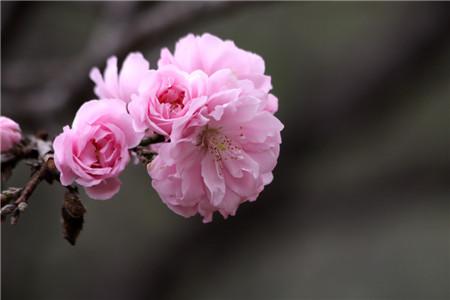
繁殖后的管理
如果还在苗期,成活之后,春天要及时把砧木剪掉,重视期间的水肥管理。要是管理的好,这段时间枝干会很快变粗,为了适应盆栽,要尽量控制根系的伸展,这样就能是根须增多,第二年就能上盆了。开花的时候,尽量保障其水分的供应,因为它开的花会很多,消耗的水也比较多。
0
0



